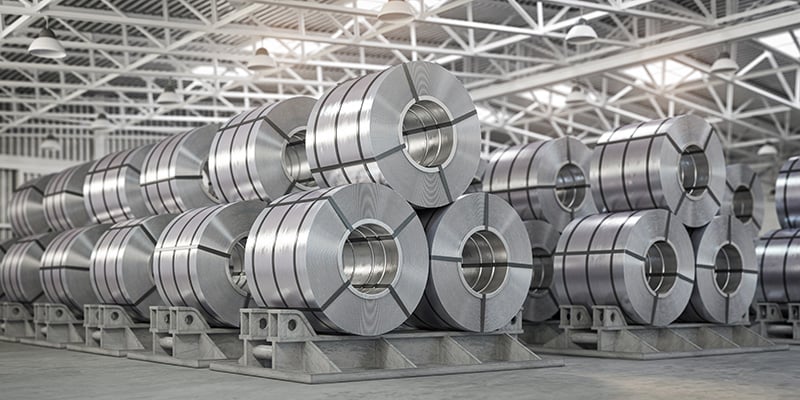Reliable Industrial Recycling Solutions for Sustainable Packaging: A Comprehensive Overview
That's where this detailed guide on efficient commercial recycling remedies for lasting product packaging comes in. By discovering essential locations such as product packaging product selection, designing for recyclability, carrying out recycling framework, collaborating with recycling companions, and monitoring and measuring recycling success, this guide will certainly equip you with the knowledge and devices needed to make educated decisions and drive positive adjustment within your organization. Whether you're a product packaging expert, sustainability supervisor, or simply interested in the subject, this guide will certainly provide beneficial understandings and strategies to aid you browse the globe of sustainable packaging.
Packaging Material Choice
The selection of packaging materials plays an essential role in guaranteeing the sustainability of industrial recycling solutions. When it involves sustainable product packaging, the choice of products is crucial in decreasing environmental effect and maximizing recycling efficiency. Selecting the ideal products can help in reducing waste generation, conserve resources, and promote a circular economic situation.
One essential variable to think about in product packaging material selection is recyclability - industrial metal packaging. Products that can be conveniently recycled and included back into the manufacturing cycle are chosen. Products like cardboard, paper, glass, and specific types of plastics can be recycled several times without losing their high quality. On the other hand, materials that are difficult to recycle, such as non-recyclable compounds or mixed plastics, can create obstacles for the reusing procedure and may wind up in incinerators or landfills.
One more consideration is making use of renewable and biodegradable materials. Packaging made from renewable energies, such as plant-based plastics or biopolymers, can help in reducing reliance on fossil fuels and minimize climate modification. Furthermore, naturally degradable materials break down naturally in time, reducing the accumulation of waste in land fills.
Moreover, the weight and volume of product packaging materials need to be minimized to lower transportation costs and energy consumption. Lightweight materials not only call for fewer sources during manufacturing however also contribute to reduce carbon emissions throughout transportation.
Designing for Recyclability
In order to make certain the recyclability of packaging products, thoughtful design is vital. Designing for recyclability involves developing product packaging that can be easily arranged, separated, and processed in recycling centers. One vital aspect of making for recyclability is the choice of materials. Packaging developers should focus on making use of materials that are widely approved for recycling and have developed reusing frameworks. Materials such as glass, light weight aluminum, and particular kinds of plastic, like PET and HDPE, are typically recycled and ought to be favored over materials that are tough or expensive to recycle.
One more vital consideration in creating for recyclability is the removal of unnecessary components or materials. By decreasing the number of layers, finishes, and added elements, product packaging can be made easier and less complicated to recycle. In addition, developers ought to intend to decrease the use of mixed materials, as they can make complex the recycling process.

Implementing Recycling Infrastructure
Effective execution of reusing infrastructure is vital for the success of commercial reusing solutions. Without proper facilities in place, the reusing process becomes inadequate and ineffective, impeding the total goal of lasting packaging.
To apply recycling facilities efficiently, a number of essential aspects require to be thought about. There ought to be a well-organized collection system that helps with the splitting up and collection of recyclable products. This can include designated reusing bins in public rooms, in addition to collaborations with waste monitoring business for curbside pick-up and sorting.
Once collected, the recyclable products need to be moved to recycling facilities in a prompt way. This requires effective logistics and transportation networks, guaranteeing that the products get to the ideal centers without delay.
At the recycling facilities, advanced sorting and processing technologies must remain in location to separate different kinds of products effectively. This includes using automated sorting makers, optical scanners, and manual sorting methods.
In addition, there must be a durable market demand for recycled materials. This can be accomplished via cooperations with makers and sectors that utilize recycled materials in their production procedures. Developing a steady market for recycled materials incentivizes the reusing market and advertises the circular economic situation.
Teaming Up With Recycling Partners

One secret facet of teaming up with recycling partners is the establishment of clear interaction networks. It is essential to develop open lines of interaction to assist in the exchange of info, updates, and comments. This enables both events to remain informed about the progress of recycling initiatives and deal with any type of obstacles or problems that may develop.
Furthermore, partnership can entail joint efforts in creating and applying recycling programs. Reusing partners can provide useful understandings and support in developing efficient collection systems and identifying the most appropriate recycling modern technologies. By collaborating, businesses and recycling partners can enhance the reusing process and reduce waste.
Moreover, collaboration can expand beyond the operational elements of recycling. It can additionally incorporate advocacy and education efforts. By signing up with pressures, organizations and recycling companions can raise awareness concerning the relevance link of reusing and promote the fostering of sustainable packaging methods among consumers and other stakeholders.
Tracking and Measuring Recycling Success
To make sure the effectiveness of industrial reusing solutions and the accomplishment of lasting packaging goals, it is essential for companies and their reusing companions to establish a thorough system for tracking and measuring recycling success (industrial packaging solutions). Gauging and tracking reusing success permits businesses to assess the influence of their reusing efforts, determine locations for enhancement, and established meaningful targets for future progression
One method to track recycling success is with using data collection and analysis tools. By collecting information on the amount of packaging waste produced, the percent of waste that is recycled, and the kinds of materials being reused, services can acquire useful insights right into their recycling efficiency. have a peek at these guys This information can after that be evaluated to recognize patterns, patterns, and locations of inefficiency.
Another vital facet of tracking and measuring recycling success is establishing standard and clear metrics. This enables companies to contrast their efficiency versus market benchmarks and track their progression gradually. Metrics such as reusing rates, waste diversion rates, and greenhouse gas exhausts can provide a quantitative procedure of a business's recycling success.

Verdict
In conclusion, carrying out reliable commercial recycling options for sustainable packaging requires careful factor to consider of product packaging material option, making for recyclability, applying reusing infrastructure, teaming up with recycling partners, and monitoring and determining reusing success. By including these practices, organizations can contribute to a more environmentally-friendly and sustainable approach to product packaging, decreasing waste and advertising the circular economic climate.
By discovering crucial areas such as product packaging material choice, making for recyclability, applying reusing framework, teaming up with reusing partners, and monitoring and measuring recycling success, this guide will equip you with the understanding and devices needed to make informed choices and drive favorable adjustment within your company. Packaging designers ought to prioritize the usage of materials that are widely accepted for recycling and have actually developed recycling frameworks.Cooperation with reusing companions is crucial for the effective application of industrial reusing remedies and the accomplishment of sustainable packaging objectives. By joining forces, organizations and reusing companions can raise recognition regarding the relevance of recycling and promote the fostering of sustainable packaging methods amongst consumers and various other stakeholders.
By accumulating data on the amount of product packaging waste produced, the percentage of waste that is recycled, and the types of products being recycled, businesses can acquire useful insights right into their reusing efficiency.